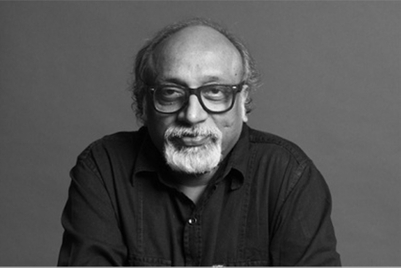
Donald Chesnut is chief experience officer, SapientNitro - the global lead for the company’s experience design practice. He is also a member of SapientNitro's global leadership team. On a recent visit to the digital major’s Gurgaon office, Campaign India caught up with him to know more about the experience-driven agency positioning and philosophy, ‘Storyscaping’, and RoI challenges. Edited excerpts:
Over the course of nearly two decades as an ‘experience designer’, how has your role changed with SapientNitro’s progression as an agency?
I have worked in a variety of roles at SapientNitro. Now that we are firmly in the agency space, I build brands through experiences. Now, communication as a form of engagement goes back and forth. It is a different level of creativity. How to you create an 'experience'? How does any brand like British Airways come to life in the experience? Brands are not what they say about themselves but what they do. That is my philosophy, and is absolutely critical to the world where two-way interactions happen in social media, radio spots, outdoor, mobile apps and websites.
Part of my role for few years was, and still is, leading experience design. That is, thinking through and designing services that work well and delight. In the recent past, we have stepped up from that and have been thinking about how to be experience-led as a brand, company and an agency. I think one of our big differentiators is how deeply we understand the consumer - it is born out of our experience and practice. Now we are designing campaigns across whole ecosystems, which we call Storyscape.
On Storyscape - can you elaborate?
It is based on understanding the customer and the two-way interaction. It is not brand on the mountain top but the customer, and designing all our engagement around that. We think that consumers own the brand, brands own the business.
I have been a champion of user and customer for many years, and we are taking it up a level. Any one person, according to our philosophy, is not as good as many of us. It is what we call connected thinking. Great work comes from a creative next to a technologist (and so on). In a technology-driven world, best ideas might come from a technologist but may best be expressed by a creative.
Can you give an example of Storyscape?
ESPN's X Games was looking at a set of activities, which is extreme alternative sports, to rival the Olympics. The games are conducted across various regions like Europe, America, Brazil. How do we think storyscaping and engagement in a variety of different ways? We came up with an idea called 'activating awesome'. We tapped into the fan demographic but focussed on bringing forth awesomeness in a local kind of way in physical, digital and communication. We developed a branded idea called ‘hypemeter’ to tap in the buzz and measure the ongoing hype at any given moment with any given athlete or sport, with the physical audience and digital media. We began to connect viewers at home, people at event, second-screen and there was a physical display of the hypemeter. ESPN found it fantastic to quantify the dialogue and excitement and bring people close to it.
For us, it began with engagement - a higher-level idea, and then came multitude of ideas that were not specific to any medium but connected all the way through platforms.
Every agency can customise a ‘hypemeter’ but there is no universal metric, and it is a growing concern. Is SapientNitro looking at addressing this gap?
It is a global concern. Everyone wants quantifiable metrics. Brands want to know that if they are going to invest, what the pay back is. We need a new science for measurement and ROI. It is not just reach, relevance and recall anymore. There are new metrics - how do you measure engagement? How do you measure how close the brand is to a consumer? We are working on some models.
We have a model, through storyscaping, that we call ‘return on experience’. It is not just RoI and KPI. In my opinion, you cannot have a new approach to creativity and marketing without a new approach to analytics and measurement. We have one component of that which measures engagement in the physical space. Digital marketing has given us the ability to understand what is going on at a given moment. We can look at websites and figure out the traffic, what are people buying etc. What if you take that and map that to physical spaces? We are beginning to use digital analytical sensors to track what people are doing.
We have another product called m-dash, which is more like a dashboard. Here we look at all of these KPIs in all sources of analytics. It is a hot tool for us as clients are also focussed on understanding of the brand at any given moment: what is going on within the sales channel, web traffic, social media ecosystem. We inform them through tools that are constantly monitoring the health of the brand chatter within the social media and looking at physical manifestations. We are creating products that are aggregating that.
How do you measure ‘return on experience’ since the word in itself is lofty? Two people can have varied experience while engaging with the same brand. We have a newer model, which we are beginning to use with some of our brands - and it is a different set of attributes that define the experiences but something that is more measurable and quantifiable. We have five different metrics in this advanced model.
Are brands ready to invest?
Some are, and some are not but there is growing interest in trying something new. It has to do with how brands have evolved. Some are adventurous and are willing to take risk. Some are continuing the way they have been working. Both are okay. There is a wireless brand we are working with that has done tracking study every quarter and they have realised ways that they do it are no longer adequate to understand brand health, when brand has become something so much bigger. They are now saying that they will continue with the methods they already use but will adopt newer methods to look at physical experiences, and factoring those experiences.
We have another retailer client who is gung-ho about physical-digital: how we take digital analytics and map it to physical world, and then bridge the gap.
Mobile is usually seen as an engagement tool, while a television commercial is seen as a medium for storytelling. Do you see the two merging, especially when it comes to creating engaging communication?
It is true but I will not be doing justice if I say that mobile is transactional and TV is a medium for storytelling. All mediums are now converging, and are seamless. There are now elements that you can watch on bigger screen, and transact through your mobile, much like with Xgames. We are looking at storytelling, engagement and transaction as a seamless function.
Over the last 10 to 15 years, brand, story and marketing have been different entities. And then utilitarian function such as transaction would be different. Notion of storytelling needs to be elevated. However, how do you get real engagement or storytelling through a mobile? How do you bring it to life as an engaging tool? Now, that is a challenge and an opportunity. It is storytelling and transaction all mixed here, and that is why we call it storyscaping.
I believe that the agencies that have this philosophy will succeed in the next generation. The last 10 years have been around the functional, rational, transactional. We have left off the emotional side but you are seeing in design, social and communication this notion of appealing to head, heart and being delightful. How do you make it a reality? That's the real challenge.
Will the role of marketer, and brand function also change in the wake of experience-led communication?
The experience is the brand, and the brand is the experience. It is more about how brand is experienced. My approach is different from a traditional agency creative - I am thinking of story and transaction side-by-side. That I think is the future. Future CMOs will become chief experience officers because marketing is only one component. In future, we will see more and more brands that are more global have a chief experience officer with marketing as a role. If re-entitled brand managers as experience manager, it opens up how brand starts thinking differently.
What is your next focus area, at Sapient Nitro and India?
We are a full-service agency, integrated and blended. Now I am focussed on more advanced capabilities. Mobile is our calling card for the future. How do you design brand interaction for a platform that is always in your pocket, and always on 24-hours a day? How do we think of more enhanced experiences? How do we blend digital and physical? For me, it is about the full experience. People are researching about the car on web, mobile and then at the dealership. We are looking at creating blended experiences.
India has been a really important part for our company for the last 12 to 14 years. When we began, it was pure technology. We began in India in 1999-2000, originally building it out of technology but then we realise how our company is multi-disciplinary. Globality is the key to who we are. We have many clients that have brands in multiple regions and many businesses in various regions. India and South America are the two big focus areas for us.
In India, we are trying to understand what the opportunity for engagement is. Role of mobile will be key in Asia, and in India. It is an opportunity, and rests nicely with some of our core key capabilities.
Certainly, other type of communication (ATL and BTL) are important but engagement in key devices is high priority for us.
Currently, what are the Indian clients for SapientNitro?
Citibank, different work for Coke group like Sprite, Fanta etc. We have done some work in the past with Absolut, the vodka brand. These are some that we can mention. We have started work with Indian brands too but those cannot be mentioned for now. You will see some announcements. What we are looking at is Indian brands and global brands with Indian footprint. Both are key to how we see next couple of years.
According to you, what are the challenges specific to the Indian market?
Finding talent that understands and that will be the next wave of growth. India is a pretty diverse market. (For instance) We are introducing Fiat in this market as part of Chrysler brand but India is so much bigger that there is no set demographic. That is my observation, and challenge. How you are going to engage, even for a brand like Sprite that cuts across many demographics, in many different ways and across mediums?
Mobile adoption is widespread but not smartphones. Our approach to creativity helps support that. We are not an agency born out of one type of channel. Digital is our calling card but how we approach creativity, and even our methodology that we call Storyscape, seeks to address this. We are looking at brand engagement and how you define it at a higher level and then figure out where do you want to play. This plays out well for diversity.


.jpg&h=334&w=500&q=100&v=20250320&c=1)
.jpg&h=334&w=500&q=100&v=20250320&c=1)
.jpg&h=334&w=500&q=100&v=20250320&c=1)




.jpg&h=334&w=500&q=100&v=20250320&c=1)





.png&h=268&w=401&q=100&v=20250320&c=1)

.jpg&h=268&w=401&q=100&v=20250320&c=1)


